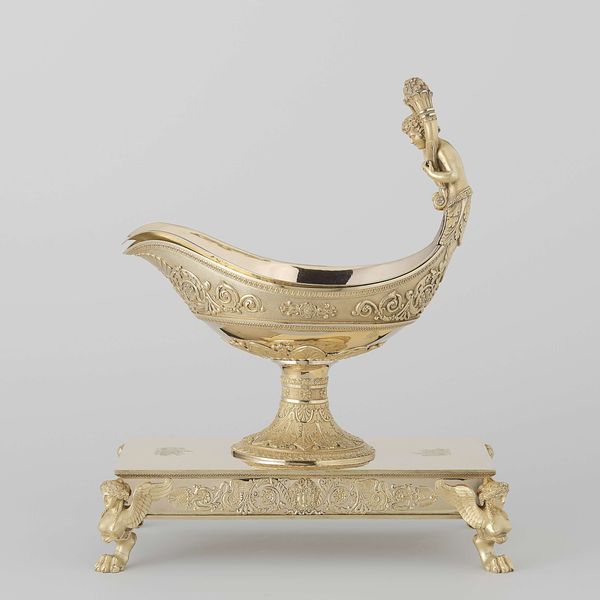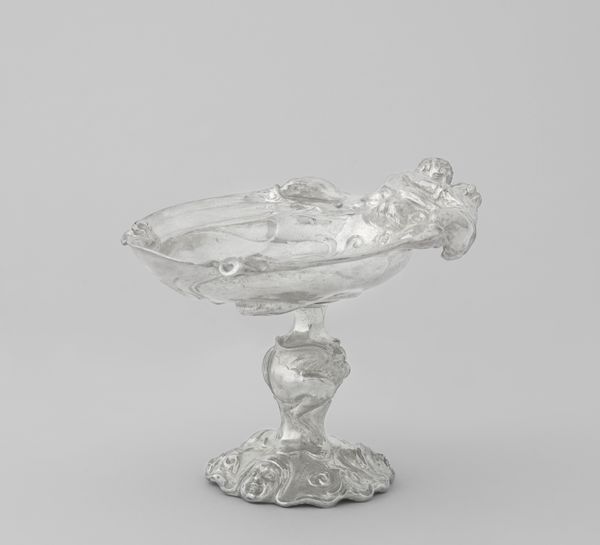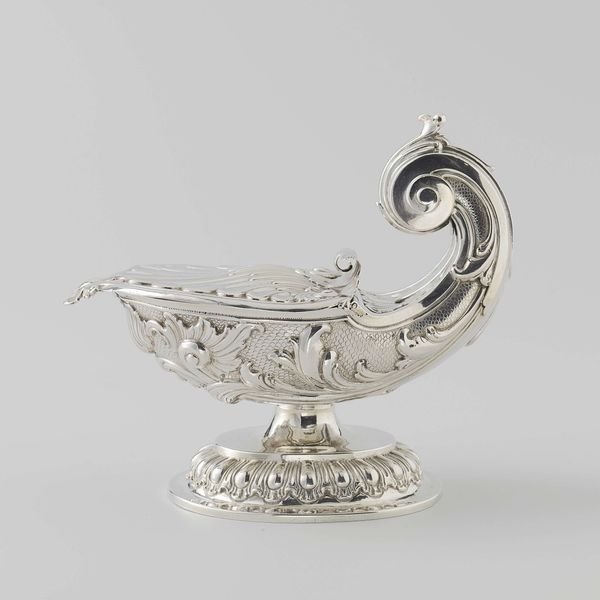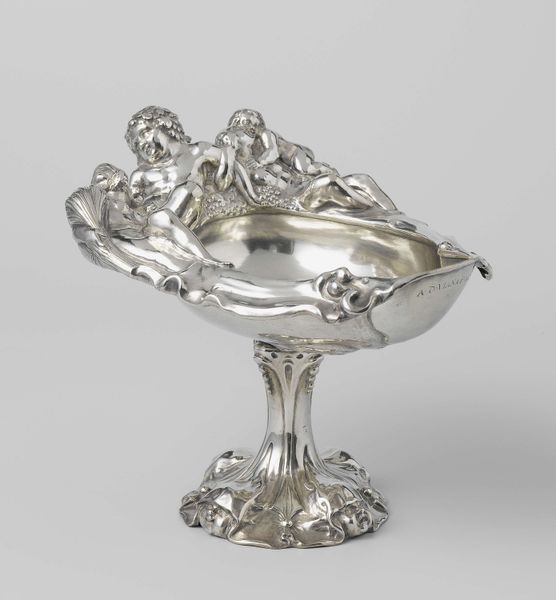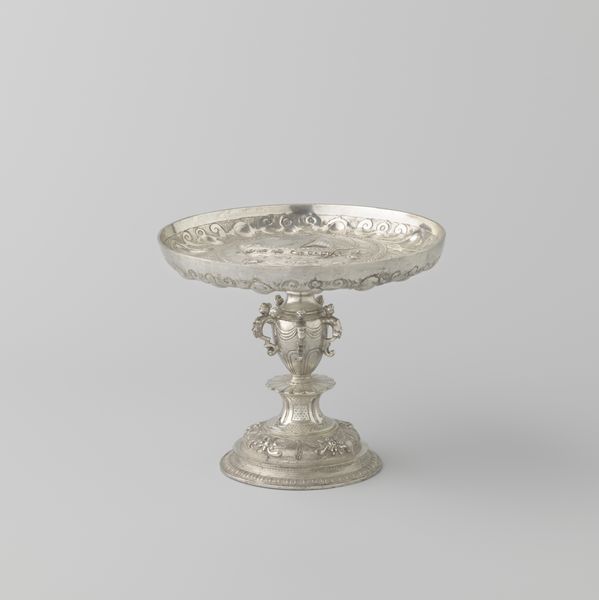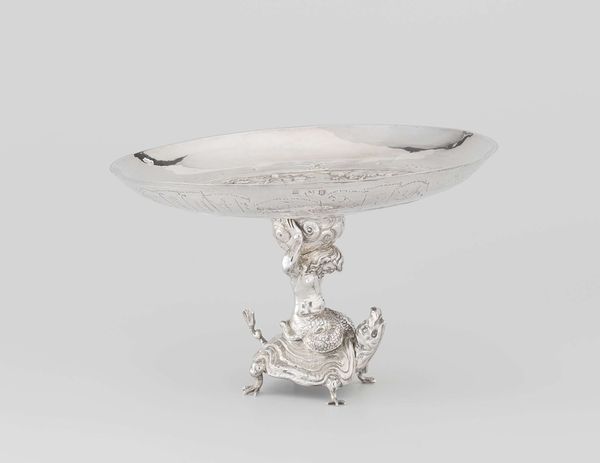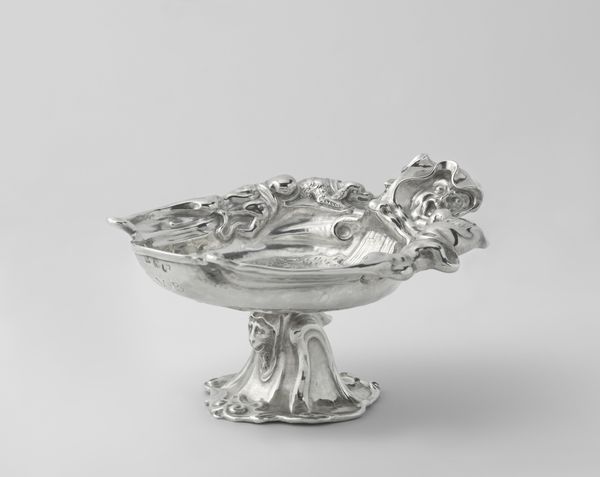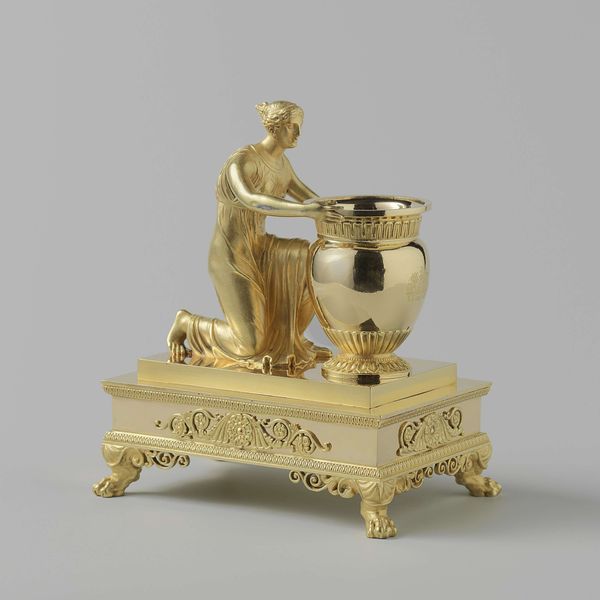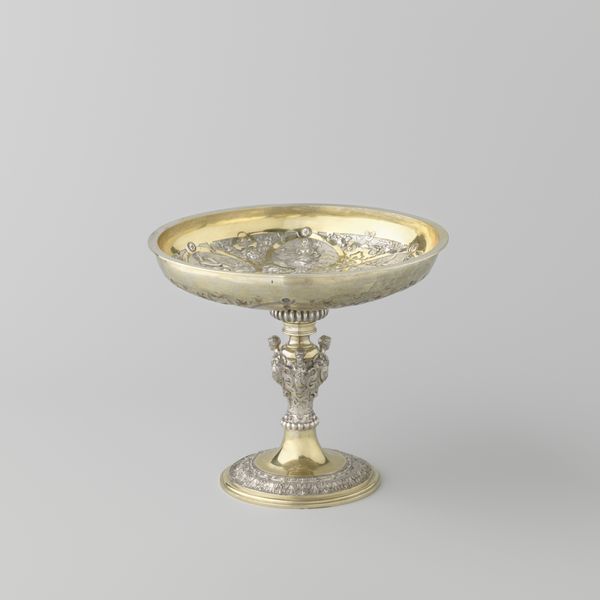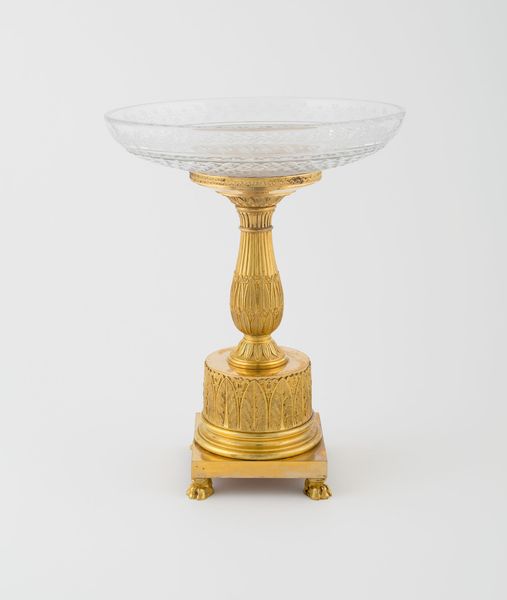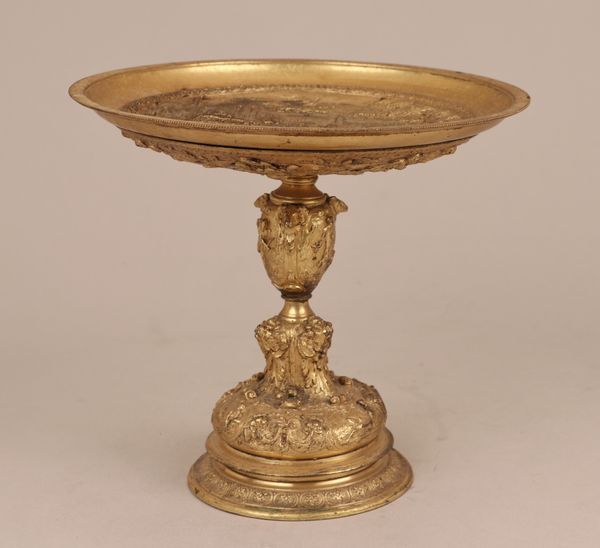
Cloches (dish covers), coolers, soup tureens, sauceboats, salt cellars, pepper and mustard pots c. 1819
0:00
0:00
Dimensions: height 13.6 cm, width 14.6 cm, depth 10 cm, weight 1323 gr
Copyright: Rijks Museum: Open Domain
Editor: This collection of brass objects by Jean-Baptiste-Claude Odiot, dating back to around 1819, feels incredibly opulent. It's the sheer extravagance of it all. How would you interpret such a display of wealth? Curator: Well, this piece really speaks volumes about power dynamics of the time. Think about the socio-political climate of 19th century France: the aftermath of revolution, the rise and fall of Napoleon. The bourgeoisie and aristocracy were grasping for ways to reinstate not just financial dominance but to actively perform that status. Wouldn’t you say the incorporation of aquatic mythological figures also alludes to maritime power and trade routes of that time, cementing a national identity? Editor: Absolutely, there’s a strong sense of asserting dominance, a visual language of prestige. I hadn't fully considered it as part of constructing a new national identity, though. Curator: Consider how these displays not only highlighted material excess but gender roles, the domestic sphere, and who got to enjoy the 'fruits' - both literally and figuratively - of this abundance. Who were these riches meant to impress, and what were they trying to say? Were there those at the table, who had amassed their wealth, via the plunder of colonies? Editor: That's fascinating. So it’s less about the beauty of the object itself, and more about its context as a symbol of broader inequalities? Curator: Exactly. By understanding its function as a historical artifact that encodes specific values, we can confront difficult aspects of history: class, gender, colonialism and social identity. Can functional art be truly apolitical, if you think about it? Editor: It really puts the piece in a new light. I see it not just as a display of craftsmanship, but as a potent signifier of a specific social order. Thank you! Curator: My pleasure. I hope it's a tool for analyzing these types of artistic expression, beyond aesthetics and into understanding our past.
Comments
rijksmuseum about 2 years ago
⋮
A confidante of the Russian empress commissioned this 140-piece service, several items of which are displayed here. Silversmith Odiot, the painter Prud’hon and the architect Cavelier proudly presented the new models at the 1819 French national exhibition of decorative art. Notable are the kneeling angels supporting the soup tureen, which are characteristic of the late Empire style.
Join the conversation
Join millions of artists and users on Artera today and experience the ultimate creative platform.
